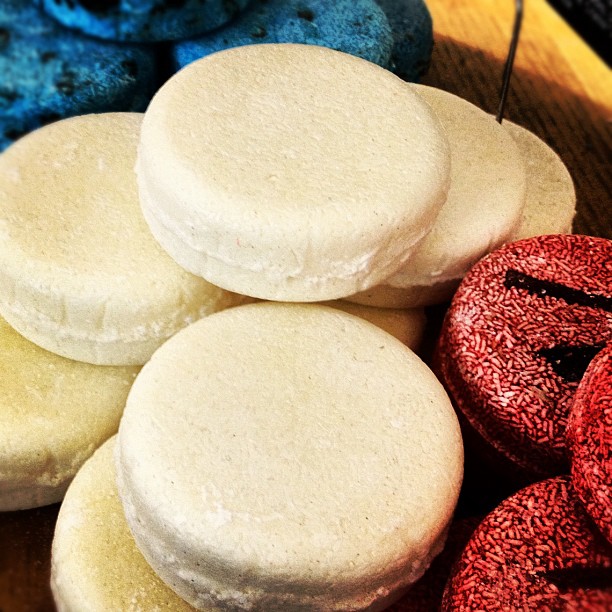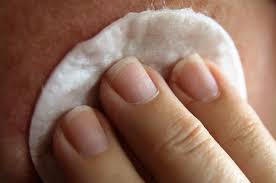VITAMIN E
Contents
1.1 Physiochemical Properties of vitamin E:
1.3 Applications of Vitamin E:
1.4 Alternatives of Vitamin E:
1. Vitamin E
Vitamin E is a group of lipophilic, naturally occurring chemicals that have a chromanol ring with a side chain at the C2 position and include four tocopherols and four tocotrienols in their molecular structure. Vitamin E is currently thought to prevent free radical-chain peroxidation of polyunsaturated lipids in membranes and lipoproteins. For mammals, the most physiologically active form is -tocopherol, which is the predominant form of vitamin E present in blood and tissues. The estimated average need for -tocopherol for humans is 12 mg d1, although dietary intakes and plasma levels of -tocopherol vary greatly across individuals. The potential of Vitamin E to protect the central nervous system, atherosclerosis, and cancer diseases have yet to be completely characterized. Absorption, intra- and intercellular transfer via particular proteins, and oxidative metabolism of the various forms of vitamin E acquired from food are all potentially significant determinants of ultimate biological activity.
1.1 Physiochemical Properties of vitamin E:
At room temperature, tocopherols are viscous oils that are insoluble in water but soluble in ethanol and aprotic solvents. Vitamin E is a slightly yellow to amber, almost odorless, transparent, viscous oil that darkens due to oxidation when exposed to air or light. RRR—tocopherol has a melting point of 3 °C. Tocopherols have extremely tiny optical rotations that vary depending on the solvent. The ultraviolet absorption spectra of tocopherols and tocotrienols in ethanol exhibit an absorption maximum at 292–298 nm, while the infrared spectra reveal stretching and a distinctive band at 8.6 m for OH (2.8 3.0 m) and CH (3.4 3.5 m). In a hydrophobic solution, -tocopherol emits the light at approximately 325 nm.
1.2 Origin of Vitamin E:
Natural Vitamin E is produced from vegetable oils, mainly soybean oil. Petrochemicals are used to make the synthetic vitamin. When compared to natural Vitamin E, seven of the stereoisomers in synthetic Vitamin E have distinct molecular configurations and poorer biological activity. That is, synthetic versions are less effective in providing health advantages to the body. Vitamin E may be found in a variety of foods, including seeds and fruits. Green veggies are another good source. Vitamin E can only be synthesized by plants and photosynthetic organisms. The quantity and composition of tocopherols and tocotrienols in natural oils vary significantly across plant species and even within the same species. Tocopherols are found throughout higher plants, while tocotrienols are only found in a few non-photosynthetic tissues. Tocotrienols are abundant in the palm, rice, and annatto, with tocopherol–tocotrienol ratios of 25:75, 50:50, and 0.1:99.9, respectively. Palm oil has high levels of and -tocotrienols. The main vitamin E isoform discovered in rice bran oil is -tocotrienol, whereas -tocopherol is one of the key isoforms found in wheat germ oil. The most significant commercial product is All-racemic-α-tocopherol, an equimolar combination of all eight stereoisomers that are produced either by complete synthesis or from natural sources. It is mostly used as an acetate ester. The commercial synthesis is divided into three stages: the creation of 2,3,5-trimethylhydroquinone, the production of the side chain component, and the condensation process.
1.3 Applications of Vitamin E:
Multiple functions of vitamin E have been demonstrated or proposed, including antioxidant properties by scavenging free radicals, particularly peroxyl radicals and singlet oxygen, membrane stabilization by forming complexes with destabilizing particles to avoid disruption of the amphipathic balance within the structure, a physiological regulator of enzyme activity, cellular signaling, and cell redox regulation. Among these activities, the involvement of vitamin E as an antioxidant against free radical-mediated lipid peroxidation has been established, and it seems that this is the most significant physiological activity of this vitamin. Vitamin E also prevents air oxidation of foods, oils, and industrial products, thus extending their shelf life. Vitamin E is widely used as a dietary supplement, by itself or together with other micronutrients such as vitamin C, to promote health and to reduce the risk of or prevent diseases that are assumed to arise from detrimental oxidative modification of biological molecules
Vitamin E is used to fortify some foods and beverages. People with fat-malabsorption disorders and inherited disorders in which the liver’s -tocopherol transfer protein (α-TTP) is faulty or absent or selenoprotein levels are lower are more susceptible to become vitamin E deficient and need large amounts of supplementary vitamin E. Due to the widespread use of Vitamin E in the pharma, culinary, and cosmetic sectors, about 35,000 tonnes of vitamin E are produced globally each year. Vitamin E is a medically necessary vitamin that has been used in a variety of areas such as medicine, pharmaceutics, cosmetics, and foods. Vitamin E is thought to have an essential role in the medical promotion and the prevention or treatment of certain illnesses and disorders.
1.4 Alternatives of Vitamin E:
To fight oxidative stress, polyphenols selected for good bio-availability come to light as good alternatives. In nature, there are a variety of plant chemicals with antioxidant potential that may replace vitamin E antioxidant activity, such as polyphenols. As the name suggests, the fundamental structure of these polyphenols is that they include a phenyl group, similar to vitamin E. Polyphenols’ anti-oxidant potential has long been recognized; almost a century ago, polyphenols were even suggested as vitamins due to the anti-oxidant protection they provided in certain illnesses. Even more intriguing, there are molecules inside polyphenols that have a considerably greater anti-oxidant potential than vitamin E because they contain more hydroxy groups linked to benzene rings per unit of weight than vitamin E. However, not all of these polyphenols are appropriate as vitamin E substitutes. Bioavailability, radical affinity, tissue distribution, and metabolism must all be taken into account.
1.5 Safety and Storage:
At room temperature, vitamin E is stable, but at high temperatures, in the presence of light, or an alkaline media, it is easily oxidized. Frying is one of the most popular ways of food preparation, and during the frying process, typically between 160–190 °C, vitamin E is oxidized, yielding complex combinations of compounds such as tocored (5,6-tocopheryldione) and dimers that are thought to be produced by tocopheroxyl radical recombination. Transition metal ions such as ferric ions (Fe3+) and cupric ions (Cu2+) oxidize -tocopherol to -tocopheroxyl radical.



No Comments